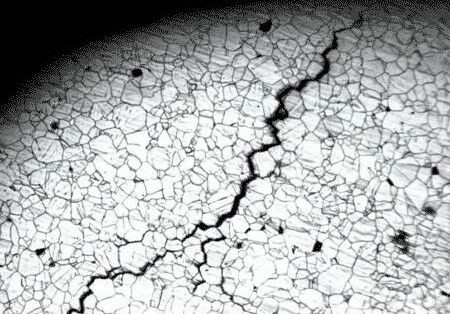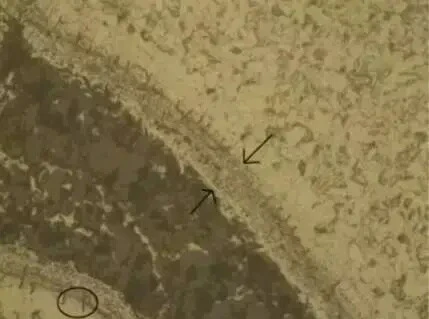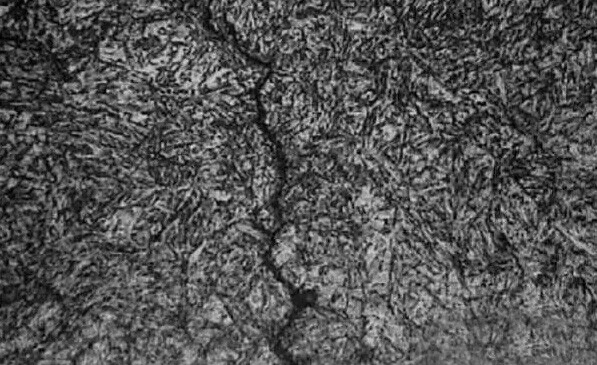Cracks come in various types, including material defects, heat treatment cracks, and forging cracks, among others, which can be overwhelming to identify. However, recognizing them is crucial for pinpointing the process in which they occur, aiding in the analysis of their causes.

Firstly, it's essential to understand the concepts of "material defects" and "forging cracks." Cracks that appear after forging should all be understood as "forging cracks." However, the factors leading to forging cracks can be further divided into:
- Forging cracks caused by material defects.
- Forging cracks caused by improper forging processes.
Initially, distinguishing cracks based on their macroscopic forms is necessary. Transverse cracks generally have no relation to the base material, while longitudinal cracks require combined analysis of crack morphology and forging techniques.
Cracks with decarburization on both sides are definitely formed during forging. Whether they are caused by material defects or forging processes needs to be analyzed based on metallography and process details.
For a batch of workpieces of the same type and specification, forging cracks typically occur in the same location, extending relatively shallowly under a microscope, with decarburization on both sides. Material cracks may not repeat in the same location and can vary in depth under the microscope. While there may not be a consistent pattern, careful observation and analysis often reveal certain regularities.
Material cracks mostly align with the material's longitudinal direction, whereas forging cracks have two types: those caused by overheating, showing oxidation and decarburization near the cracks, and those resulting from cold shots, exhibiting lattice damage and tearing. These differences can be distinguished in metallography.
The purpose of forging is multifold:
- Meeting forming requirements.
- Improving internal material structure, refining grain size, and ensuring uniform elemental composition and structure.
- Increasing material density and optimizing streamline distribution by eliminating pre-existing internal defects such as unexposed pores or looseness.
- Serving subsequent processes through proper post-forging heat treatment methods.
Therefore, it is the responsibility of forging to incorporate a certain level of defects from the original material. Large-scale forged parts typically start directly from steel ingots, which inherently contain numerous casting defects. Proper forging techniques can effectively consolidate these so-called "defects." Thus, the rationality of forging processes primarily determines whether cracks will occur in the forged parts.
Of course, compared to a stable forging process, if clear requirements for controlling material defect levels before forging are specified, any cracking phenomena resulting from material defects exceeding the requirements and occurring under the original forging process can be attributed to "forging cracks caused by material defects."
Crack issues require specific analysis, combining process analysis, including considerations of protective atmospheres during heating processes. Forging should aim to consolidate material cracks. Oxide skin is typically compact and gray, while contaminants from sample preparation appear loose and dark. High magnification or energy-dispersive spectroscopy (EDS) analysis may be necessary when visual differentiation is challenging.

Forging Cracks:
Forging cracks generally form at high temperatures during forging. When cracks expand and come into contact with air during deformation, observing them under a 100X or 500X microscope reveals that the cracks are filled with oxide skin, and both sides are decarburized, with a ferrite structure. Their morphology is typically robust, often appearing as multiple cracks with no fine tips, more circular, and lacking clear directional characteristics. Apart from these typical forms, finer forging cracks may sometimes occur, with partial rather than complete decarburization around them.
Heat Treatment Cracks:
Cracks formed during quenching and heating processes exhibit distinct differences in nature and morphology compared to those formed during forging. For structural steel, the heating temperature is generally much lower than the forging temperature. Even for high-speed steel and high-alloy steel, the heating and holding times are much shorter than those for forging. However, due to excessive heating, prolonged holding times, or rapid heating during the heating process, early cracking may occur. These cracks appear along coarse grain boundaries, with slight decarburization on both sides. Excessive heating rates can also lead to early cracking, with no apparent decarburization on both sides, but the cracks and their tails are filled with oxide skin. Sometimes, instrument malfunctions can lead to extremely high temperatures, resulting in extremely coarse grain structures and cracks distributed along coarse grain boundaries.

Factors Affecting Quenching Cracks:
Numerous factors affect quenching cracks, only a few of which are commonly encountered in production.
-
Quenching cracks caused by pre-existing defects in materials: If there are cracks or inclusions on the surface or inside the materials that were not detected before quenching, they may lead to quenching cracks.
-
Cracking caused by inclusions: If there are severe inclusions inside the parts or if there are already hidden cracks due to severe inclusions, cracks may occur during quenching.
-
Cracking caused by poor initial structure.
-
Cracking caused by improper quenching temperature: Improper quenching temperatures can lead to overheating and subsequent cracking of the parts. The occurrence of cracks due to overheating during quenching results in coarse grains and coarse martensite in all cases.
-
Cracking caused by improper quenching cooling: Improper cooling during quenching can also cause parts to crack.
Crack Identification Methods:
Differentiating between quenching cracks, tempering cracks, forging cracks, and grinding cracks is crucial for accurate troubleshooting, aiding in identifying the process where cracks occur and analyzing their causes.
-
Observe the differences in forms between quenching cracks and grinding cracks. Cracks found after grinding, which were not visible during quenching, must be distinguished as quenching cracks or grinding cracks. When cracks are free from contaminants, their morphology, particularly the direction of crack development, can aid in differentiation. Grinding cracks are perpendicular to the grinding direction, appearing as parallel lines or a turtle-shell pattern, while quenching cracks are generally deeper and larger, unrelated to the grinding direction, often appearing as straight knife-cut cracks.
-
Pay attention to the location of crack occurrence. Cracks occurring at sharp concave-convex corners, hole edges, engraving sites, steel stamping sites, or surface defects caused by machining processes are typically quenching cracks.
-
Distinguish between quenching cracks and pre-quenching forging cracks or other cracks by observing the fractured surface of the part. Quenching cracks typically exhibit a white or dark white or light red color (caused by rusting when water quenched), while cracks with a deep brown color, or even with oxidation skin, are not quenching cracks but pre-existing cracks from forging or rolling processes. These cracks will be enlarged during quenching. Since quenching cracks are generally formed below the MS point, their surfaces will not oxidize.
-
In microstructures, quenching cracks fracture along grain boundaries. If the fracture does not occur along grain boundaries but within grains, it is considered fatigue cracking.
-
If there is decarburization around the crack, it is not a quenching crack but a crack that existed before quenching, as quenching cracks are formed during quenching cooling and do not experience decarburization.
-
Machining defects causing quenching cracks: Due to poor machining, coarse and deep tool marks may be left on the surface of the part. Even for simple components or areas not subject to stress concentration, these defects can lead to cracking during quenching or early damage during service.

